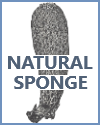Science Picture Gallery |
| www.studenthandouts.com > Science > Science Image Gallery |
 |  |  |  |  | ||||||
| Ear Diagram | Deep Sea Fish | Grand Canyon Rock Strata | Deep Sea Spirula | Fossil Shell |
 |  | |||||||||
| Sea Urchin | Natural Sponge |
|
Providing accurate scientific illustrations to science students offers several valuable benefits. Enhanced Observation Skills: Creating scientific drawings requires students to closely observe and analyze the subject matter. They must pay attention to fine details, shapes, sizes, and proportions, which can help improve their observational skills. Reinforcement of Concepts: Drawing a scientific object or phenomenon themselves reinforces the understanding of the subject matter. It requires students to think about the structure and function of what they are drawing, leading to a deeper comprehension of the topic. Improved Visual Memory: The act of drawing helps students remember and retain information better. When they create a visual representation of a concept, it becomes a memory aid that they can refer back to when studying. Hands-On Learning: Drawing is a hands-on, kinesthetic activity. It engages multiple senses and learning modalities, making it an effective learning method for students who may not learn best through traditional methods like reading or listening. Communication Skills: Scientific drawings are a means of communication in the scientific community. By learning to create accurate drawings, students develop skills to effectively convey their observations and findings to others, which is crucial in scientific research and communication. Attention to Detail: Accuracy in scientific drawings is vital. Students learn the importance of attention to detail, precision, and objectivity, all of which are critical in scientific research. Critical Thinking: Scientific drawing encourages critical thinking. Students must make decisions about what to include, how to represent various elements, and how to show spatial relationships accurately. Creativity and Artistic Skills: While scientific drawings aim for accuracy, there is room for creativity in how students choose to represent objects. This can encourage the development of artistic skills and an appreciation for the aesthetics of science. Interdisciplinary Learning: Scientific drawing can bridge the gap between science and art, promoting interdisciplinary learning. It helps students see the connections between seemingly disparate subjects. Historical Context: Many scientific breakthroughs in the past were documented through detailed drawings. By engaging in this practice, students connect with the history of scientific discovery and exploration. Assessment and Documentation: Scientific drawings can serve as a form of assessment, allowing teachers to evaluate students' understanding of a topic. They can also serve as a record of scientific observations and experiments. Applicability to Various Disciplines: Scientific drawing is not limited to one field of science. It can be applied in biology (botanical or zoological drawings), geology (rock or mineral specimens), astronomy (observations of celestial objects), and many other disciplines. Engagement and Motivation: Drawing can be an engaging and enjoyable activity for many students. It can motivate them to explore and learn more about the natural world. Providing accurate scientific drawings to science students offers a multi-faceted approach to learning that combines observation, critical thinking, and communication skills. It enhances their understanding of scientific concepts and fosters skills that are valuable not only in the classroom but also in scientific research and communication. |
| www.studenthandouts.com > Science > Science Image Gallery |






